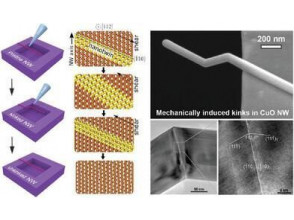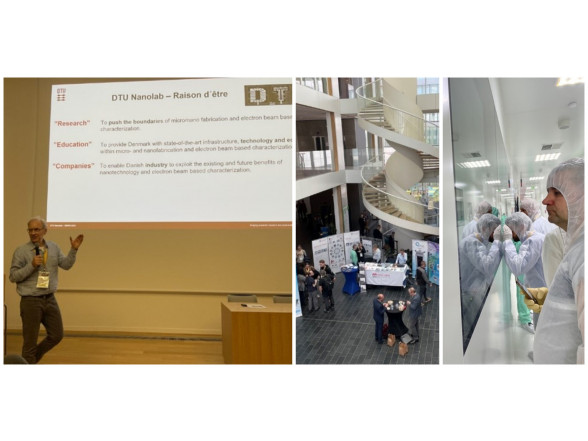The article "Reshaping Covalent Nanowires by Exploiting an Unexpected Plasticity Mediated by Deformation Twinning" by scientists from ISSP UL and the Institute of Physics, University of Tartu, has been published in the scientific journal Small (IF 13.3). The online publication has been available since September 5. The article was co-authored by ISSP UL researchers Mg. Annamarija Trausa (Microscopy Laboratory), Ph.D. Edgars Butanovs and Dr. Phys. Boris Polyakov (Thin Films Laboratory), as well as researchers Sergei Vlassov, Sven Oras, Tauno Tiirats, Veronika Zadin and Andreas Kyritsakis from the Institute of Physics, University of Tartu.
Covalent nanowires are a class of nanomaterials with a wide range of applications due to their unique electrical, mechanical, and thermal properties, such as nanoelectronics and sensors. Covalent nanowires are traditionally considered rigid structures characterized only by elastic deformation followed by material collapse. However, this study challenges the previously known properties of nanowires by showing that covalent nanowires can exhibit unexpected ductility due to deformation-induced twinning.
The authors found that single-crystal copper oxide (CuO) nanowires can plastically change their shape under external mechanical stress. Both structural studies by electron microscopy carried out mainly at the ISSP UL and theoretical modelling by researchers at the University of Tartu suggest that this effect is due to deformation-induced twinning. This is a mechanical phenomenon in which crystals change shape, forming twin boundaries in the crystal lattice. This process allows significant deformation without destroying the material. Although this process is well-known in metals, the discovery that such a process can also occur in covalent nanomaterials is unexpected. In-situ nanomanipulation experiments carried out at the ISSP UL under an electron microscope allowed the nanowires to be deformed and then returned to their original shape, indicating possible reversible plasticity of CuO nanowires, which was also confirmed by molecular dynamics calculations.
The phenomenon described by the scientists provides new insights into the plastic deformation mechanisms of covalent nanowires and offers potential opportunities to develop techniques to tailor the shape of the nanowires after synthesis and introduce new functional properties.
Small is a peer-reviewed journal published by Wiley. It is dedicated to micro- and nanoscale research. The journal publishes articles on experimental, theoretical, fundamental, applied, and interdisciplinary research results. Small is one of the leading multidisciplinary journals, with articles covering a wide range of nano- and micro-scale topics in materials science, chemistry, physics, engineering, medicine and biology.



